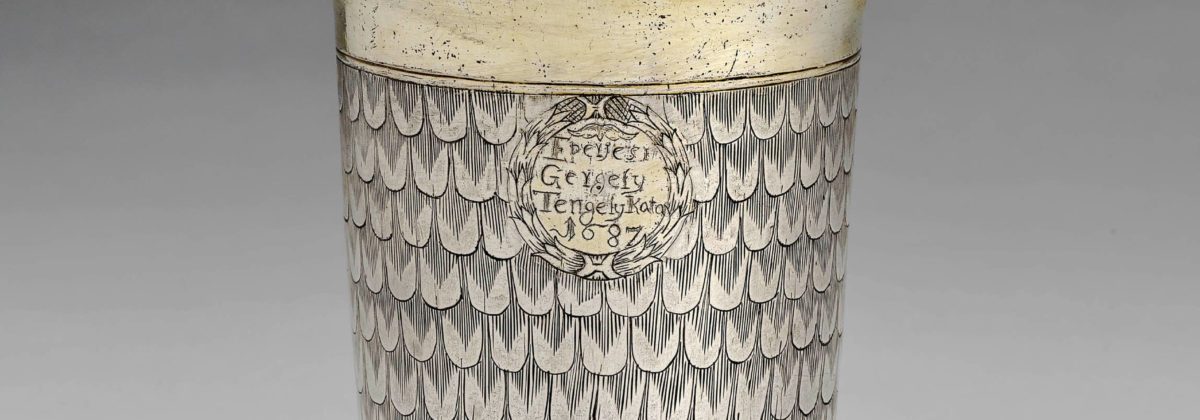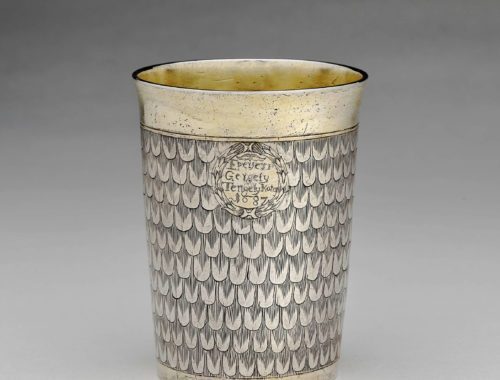Detailed Information
Silver Transylvanian Peacock Eye Pattern Beaker, Parcel Gilt
The present silver beaker is a very nice drinking vessel from Transylvania. It has a cylindrical body with a slightly flared rim. The foot is slightly raised. The walls of the beaker are on the upper and lower side with gilt rings engraved, delimiting the body from the edges. These emphasize the decoration of the body arranged in rows and which is left in white silver; this pattern is the so-called peacock eye pattern and it is a variation of the fish-scale pattern. At the upper side, in the middle of one side of the body there is an engraved medallion decorated with a wreath of lotus flowers and the inscription “Epeyesi Gergely Tengely Kata” on a gilt background as well as the year “1687”. The beaker wears its original gilding inside.
Context and Creation of the Beaker
The beaker bears no marks, however its type and its décor leave no doubt on the place of its origin. The engraved name and year are also helpful in order to be able to date the object and to suggest its geographical origin.
The two examples in The MET show on the first a wave décor (s. The MET, Accession Number: 2010.110.28) and on the second a snakeskin ornament (s. The MET, Accession Number: 2010.110.36). A third example, which also presents the rare peacock eye pattern is the collection Heller, also depicted in literature (s. Heller, Ungarische und siebenbürgische Goldschmiedearbeiten vom Ende des 16. Jahrhunderts bis zum Ende des 19. Jahrhunderts, Kat. Nr. 99, T. XXIXb).
The so-called peacock eye pattern – like other similar decorative patterns – is carried out in order to offer a better grip while eating. The pattern of peacock eye and of the peacock itself are quite popular in the arts in Transylvania and Hungary – especially in folk art. Considering it from a symbolical point of view, this pattern is in connection with a religious, Christian, context to be seen: based on an antique belief that the body of the peacock does not decay after its death, the peacock and patterns connected to it symbolise the resurrection of Jesus Christ. The peacock eye pattern is besides a symbol of exotic beauty.
The engraving on the present beaker gives also information on the owner or patron of it. The person mentioned has either donated it to a guild or offered it as a gift to someone or has ordered it on its own cause. This means that he was a member of the high society. The year engraved is a secure terminus ante quem for the creation of the beaker. This must have been created in 1687 at the latest; however, this décor was already in use since the Renaissance.
Literature
Heller, István, Ungarische und siebenbürgische Goldschmiedearbeiten: vom Ende des 16. Jahrhunderts bis zum Ende des 19. Jahrhunderts, München: Hirmer Verlag, 2000.
Koeppe, Wolfram, “Hungarian Silver.” In Heilbrunn Timeline of Art History. New York: The Metropolitan Museum of Art, 2000–. http://www.metmuseum.org/toah/hd/hung/hd_hung.htm (February 2016)



